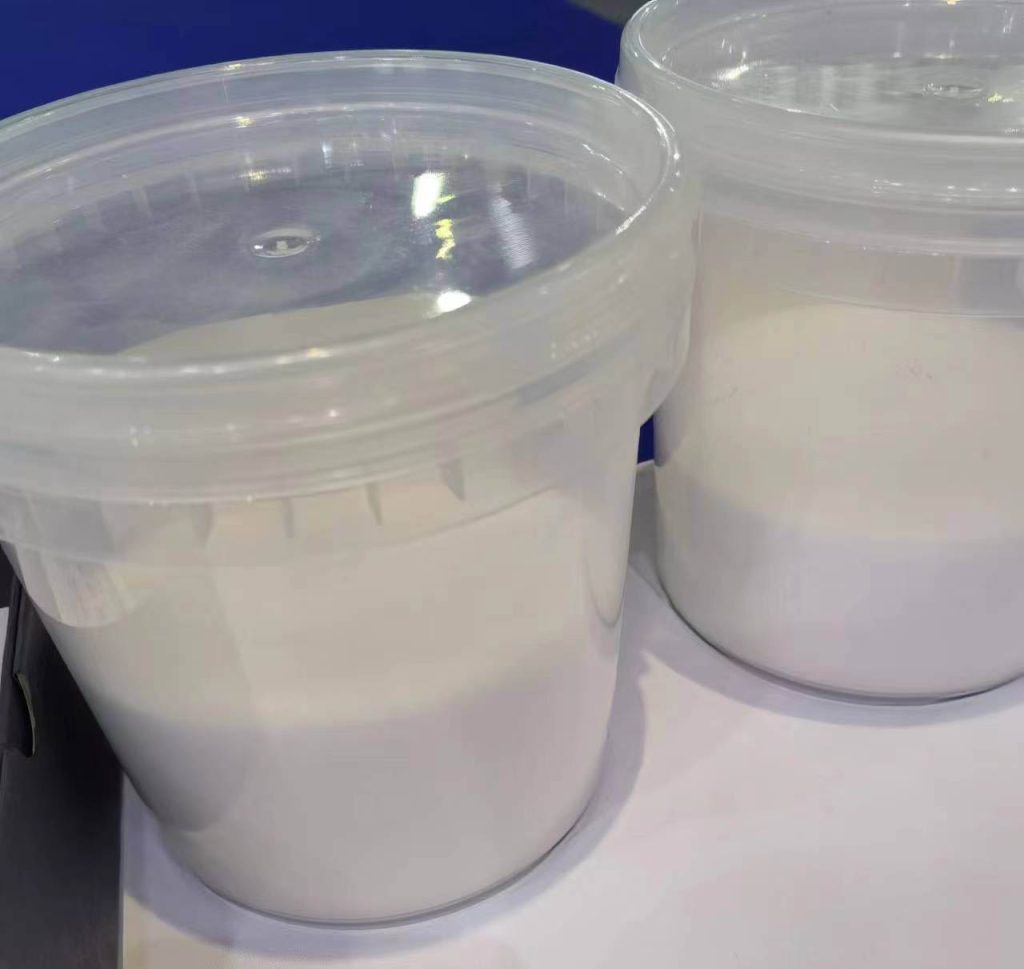Microballoons
What is Microballoons Filler?
Microballoons filler is a special material that has some useful qualities. It’s often used to prevent things from sagging or drooping when mixed with thickener. Microballoon themselves are tiny, lightweight balls made of glass. They’re fine and white powder. Manufacturer use them with epoxy and polyester resin to manufacture different stuff.
When you mix these glass microballoons into epoxy or polyester resin, you get a special paste that’s strong and doesn’t get squished easily. You can also grind this paste without any problems. These Micro Glass Beads are like small, tough particles that can be easily poured. They’re often used to make things thicker or to add more substance to things like plastics and adhesives. This helps these materials in become less dense, or less tightly packed.
This white powder made of microballoons powder is mixed with other things like polyester or epoxy resin. This mix makes a filler that’s not heavy and is easy to sand. It’s also really strong. People use glass microballoons to make epoxies thicker, and they’re also really handy for creating materials that can be shaped, sanded, and painted easily.
These can also be used to make materials lighter and easy to sand. Even adding just a little bit of these spheres into a material like resin can help make a paste or putty. These white microballoon are made from hollow glass spheres. When you mix them with a material like resin, they create a filler that’s really light and stable. This filler can be used to shape things and to stick things together.
How Do You Mix Microballoons?
Microballoons are versatile additives used to create lightweight, easy-to-work-with compounds for various applications. These are the following guides in mixing microballoons powder in some formulations:
Fairing, Filling and Filleting
When it comes to achieving a smooth and structurally sound surface in various applications, including fairing (smoothing out irregularities), filling (covering voids or gaps), and filleting (creating smooth transitions between different surfaces), a combination of epoxy resin and microballoons powder is commonly employed.
The general guideline is to mix one part by volume of epoxy resin with approximately two to three parts by volume of glass microballoons . This proportion helps maintain a good balance between structural integrity and lightweight characteristics. The microballoon disperse within the epoxy matrix, creating a mixture that can be easily spread and shaped as needed for fairing, filling, or filleting tasks.
To prevent any issues like sagging or slumping of the mixture, which can occur due to its viscosity, up to one half part by volume of a thickener can be added. Thickener additives enhance the viscosity of the mixture, making it less likely to sag or flow excessively when applied to vertical surfaces. This can be particularly important when working in elevated temperatures, as higher temperatures can cause the epoxy resin to become more fluid.
In cases where the temperature is higher than usual, adjustments to the levels of filler material might be necessary to counteract the potential for slumping. This means that a slightly higher volume of microballoon should be used to maintain the desired consistency and prevent any loss of shape or form due to the increased fluidity of the epoxy mixture at elevated temperatures.
Adhesive Manufacturing
In the manufacturing of brushable adhesive, the procedure entails combining specific volumes of mixed product epoxy resin and general-purpose thickener. The recommended ratio is one part by volume of mixed product epoxy resin to one part by volume of general-purpose thickener. For the production of knifing adhesive, the process involves different proportions. Here, you would mix one part by volume of mixed product epoxy resin with two parts by volume of general-purpose thickener.
The proportions of the general-purpose thickener and Micro Glass Beads can be adjusted to meet the specific requirements of the intended job. This flexibility allows manufacturers to fine-tune the adhesive’s characteristics to suit the project’s unique needs.
What Not to Do in Mixing Microballoons?
Throughout the mixing process, employing a firm paddle motion is the preferred method. This approach helps ensure that the components are evenly distributed, resulting in a homogenous mixture. However, it’s advisable to avoid high-speed mixers, as their rapid mixing action can introduce air into the mix, which could negatively impact the final product’s quality.
Physical and Chemical Properties
Microballoons are presented in a powdered form. They are fine solid particles, resembling a powder. Their color is white, giving them a characteristic appearance. Micro Glass Beads are essentially odorless, and as such, they don’t possess any discernible smell. The absence of an odor threshold means that there is no specific level at which an odor becomes detectable, which is consistent with the fact that microballoons are classified as an article rather than a substance with a noticeable odor.
Microballoons have a high melting point, exceeding 300°C (572°F). This property indicates that they can withstand significant heat without undergoing a phase change from solid to liquid. Microballoons are insoluble in water. These do not dissolve when in contact with water; instead, they remain as solid particles suspended in the liquid.
Microballoons are incompatible with strong acids, strong bases, strong oxidizing agents, and strong reducing agents. Incompatibility implies that when microballoons come into contact with these substances, undesirable chemical reactions might occur. It’s important to avoid mixing Micro Glass Beads with these incompatible materials to prevent any potentially hazardous reactions..
What are Microballoons Used For?
Microballoons, glass microspheres or glass bubbles are lightweight hollow spheres typically made from glass. They find a variety of applications across different industries due to their unique properties and versatility.
Non-Skid Additive for Gelcoat and Paints
When incorporated into gelcoats and paints, microballoons powder serve multiple purposes. One of the primary functions is to provide a non-skid texture to the surface. This is especially important in environments where surfaces can become slippery. The microballoons create a textured surface that helps prevent slipping, thereby reducing the risk of accidents.
In addition to their non-skid properties, Micro Glass Beads also contribute to the overall performance of the coating. The hollow nature of these spheres makes them lightweight, which can improve the density and consistency of the coating mixture without significantly adding weight. This can be particularly beneficial in applications where maintaining a lightweight structure is essential, such as in marine or automotive industries.
Microballoons can aid in controlling the viscosity and thixotropic behavior of the gelcoat or paint mixture. Thixotropy is property of certain materials to become less viscous under mechanical agitation or shear stress, and then return to their original state when at rest. Microballoons can help achieve the desired balance of viscosity, making the application of the coating more manageable while ensuring even distribution of the non-skid particles.
Fumed Silica Filler/Thickener
When incorporated into fumed silica filler/thickener formulations, microballoons modify the rheological properties of the material. By formulating with microballoons, the rheological behavior of the material can be finely tuned. This results in improved viscosity, shear-thinning behavior, and thixotropic properties. This makes them easier to apply, but returning to higher viscosity when at rest, preventing sagging or settling.
The addition of microballoons to fumed silica filler/thickener formulations can also contribute to improving the structural and mechanical properties of the resulting material. The hollow nature of the microballoons provides a high strength-to-weight ratio, which can enhance the overall strength and stiffness of the material while minimizing the addition of extra weight. This can be particularly advantageous in applications where lightweight yet robust materials are required.
Another benefit of using microballoons in fumed silica filler/thickener systems is their ability to improve the material’s thermal insulation properties. The presence of hollow voids within the microballoons creates insulating air pockets, which can reduce heat transfer through the material. This is particularly valuable in applications where thermal insulation is important, such as in construction materials, coatings, or composites.
PU Resin
Microballoons are used in enhancing the pressure resistance of the PU resin. The spherical and hollow structure of microballoons provides inherent mechanical strength due to their high strength-to-weight ratio. Incorporating microballoons into PU resin increases its overall resistance to external forces, which can be particularly important in applications where the material may be subjected to pressure or impacts.
The combination of microballoons with PU resin can lead to the development of non-combustible molding compounds. Microballoons, often composed of materials like glass or ceramics, are inherently non-combustible. When introduced into PU resin, they impart this fire-resistant characteristic to the composite material. This is especially valuable in applications where fire safety is a primary concern.
Oil Drilling Mud
The primary uses of microballoons in drilling mud is to adjust its density. Drilling mud needs to have a carefully controlled density to counteract the pressure and fluid dynamics deep within the well. By incorporating Glass Microspheres, operators can manipulate the density of the drilling mud without significantly increasing its volume. This density control is essential for maintaining wellbore stability, preventing blowouts, and ensuring safe drilling operations.
Additionally, Glass Microspheres aid in reducing the overall weight of the drilling mud. Traditional materials used to increase density, such as barite or hematite, are heavy and can lead to challenges in mud handling and transportation. Glass Microspheres provide a lightweight alternative to these conventional additives, allowing operators to achieve the desired density while avoiding the associated difficulties of handling heavy materials.


